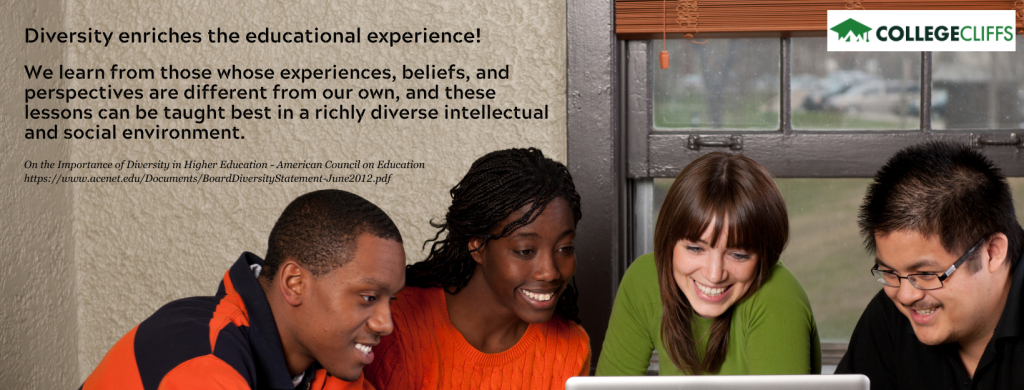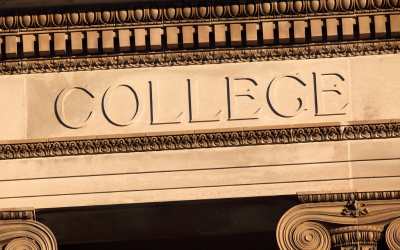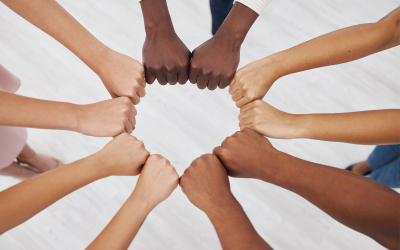How Diverse Is U.S. Higher Education?
Find your perfect college degree
In this article, we will be covering...
Colleges and universities are traditionally regarded as open and diverse places. They are places where people from various ethnic, gender, economic, and other backgrounds mingle and get exposed to various ideas and cultures. These ideas, in turn, are often perceived as controversial, groundbreaking, or ahead of their time.

Colleges and universities have always played a pivotal role in propelling the civil rights movement. The sit-in movement was a wave of nonviolent student protests that started at the North Carolina A&T State University at Greensboro and spread to dozens of colleges and universities across the country. This brought attention to the core issues of racial inequality, in particular racial segregation, and helped pave the way for its eventual abolition.
The 21st century is defined by a massive increase in global interconnectivity, primarily through the internet. This has made communication instantaneous and multifaceted and introduced a different level of social interaction and the faster spread of ideas.
This technological advance has also paved the way for exposure to various cultures, as well as the cultural shift that trends toward greater acceptance and diversity in our various social milieus, including our higher education system as a whole. Let us look at some facts regarding the current state of diversity in our country’s colleges and universities.
Understanding the US Higher Education System

The US is a big country in many respects, including geography and population. This naturally gives rise to various individual learning needs, and the country’s higher education system accommodates students coming from a wide range of backgrounds.
The US Higher Education System is itself diverse, in a way. The numbers change periodically, but in general, there are around 5,000 to 6,000 degree-granting higher education institutions, according to the latest estimates.
The full range covers small vocational/trade schools, community colleges, and universities of various sizes and prestige that offer a range of two- to four-year undergraduate degrees, as well as post-graduate and doctoral degrees.
There is also a size factor: smaller colleges, as well as vocational/trade schools, often specialize in offering 2-year degrees and certificates, while master’s and doctoral degrees are often the domain of larger colleges and research universities.
Diversity in Higher Education: Some Facts & Figures

Let’s put some stats into the picture. Of the roughly 5,916 Title IV degree-granting institutions in the country (NCES, 2021), 107 Historically Black Colleges and Universities (HBCUs) were established prior to the Civil Rights Movement.
These HBCUs serve students of African-American ancestry primarily. It is a key factor because universities mainly served white (and often male) students before they gradually opened up to more women and students from other races & ethnicities.
Nowadays, most of the country’s universities play host to an increasingly diverse student population in terms of race & ethnicity, political beliefs, and nationalities.
Geography also plays a part in determining student diversity in universities. Cities around the East & West Coasts generally have greater ethnic diversity compared to, say, the Midwest, and accordingly, these are where some of the most ethnically diverse universities are found.
Ethnicity
Some universities even have non-white students making up the largest share of their respective populations compared to white students.
Picking some notable examples from US News’ College Diversity Index, Stanford University has a 26% Asian and 26% White student population, Johns Hopkins University has Asians as their largest minority group at 27%, Pacific Union College is 30% Hispanic, and the University of Maryland, Baltimore has a sizable Asian & Black student population.
Economic Status
Economic diversity, meanwhile, is another aspect of diversity in universities. College is generally an expensive undertaking, even with financial aid. There are arguably fewer students from the bottom half of the economic spectrum going to college, although there are opportunities reserved for students coming from greater financial need.
The New York Times College-Access Index looked at economic diversity among the country’s 286 most selective colleges. Looking at Pell Grant recipients, Berea College in Kentucky comes out on top with 94% of freshmen receiving Pell Grants, with the index’s overall average putting around 21% of students from the universities covered receiving Pell Grants.
The US News survey of economic diversity in National Universities places Jackson State University (Mississippi) with the highest percentage of Pell Grant recipients, at 79%.
Different Abilities
The past several years have also seen greater attention being given in popular discourse to mental health issues and neurodivergent students. Estimates put around 8,000 neurodivergent individuals entering postsecondary education every year, according to the Neurodiversity Network.
Graduation rates for these individuals remain low, but more universities have put programs and initiatives in place to increase support and awareness. Some programs of note include the N3 (NASA’s Neurodiversity Network) Program at California State University, Sonoma, the University of North Texas’ ENGAGE program, the Neurodiversity Initiative at the College of William & Mary, and more.
Age and Gender
Other major demographic indicators of diversity include age and gender. Concerning age, it is generally acknowledged that there is a major demographic shift in enrollment in colleges and universities. Recent data shows that 40% of students with undergraduate degrees are between 18-20 years old, but 60% of undergraduates are 21% or older.
The recent years also seem to signal an increase in adult learners in undergraduate degrees. This is possibly facilitated by changes in technology and how degree programs are delivered, as well as an increase in degree programs aimed at nontraditional/adult learners who have needs that are different from those coming fresh out of high school.
With regard to gender diversity, recent years have seen an increase in women’s enrollment in universities, with 2021 stats showing women made up around 59.5% of college students, according to an article by Georgetown University citing the Wall Street Journal. There also doesn’t seem to be a straightforward explanation for this dynamic, and several factors are at play.
Meanwhile, an article published by Inside Higher Ed citing Common App and Campus Pride shows that around 2.2% of students for the Fall 2022 term identify as trans or nonbinary.
It’s not all rosy, however. Diversity in universities (especially in politics) naturally gives rise to levels of friction. It can either breed a healthy dialogue and discourse or lead to violent resistance.
The tumult of the so-called culture wars of the past several years has impacted higher education institutions, as evidenced by the clashes between students from both ends of the political spectrum.
Recent violent examples include the 2017 clashes centered around UC Berkeley and the rally at the University of Virginia in the same year that resulted in at least one fatality.
Importance of Diversity in Colleges and Universities

It is a known fact that cultural diversity affects the higher education system in the United States. While there are still stumbling blocks along the way, many colleges and universities make an effort to ensure that diversity is being advanced in various aspects of students’ lives.
Whether one is Black, White, Hispanic, or many other ethnicities, there is a place for them in the educational system. As much as possible, there should be a fair opportunity for everyone, regardless of culture and origin, to pursue the education they need to succeed in life.
There are numerous reasons why diversity is important in higher education. Here are some of the colleges and universities that can benefit from diversity.
Learn from one another.
Diversity is a great opportunity for many students to expand their knowledge and understanding of the world around them in general and the people around them in particular.
In a way, it gives them a chance for something new. Instead of being stuck in an echo chamber where the same ideas are being thrown back and forth, students who come from diverse backgrounds and personalities will be able to draw from their individual experiences and facilitate an exchange of ideas. This allows them to learn from each other, arriving at a better understanding of their differences and similarities.
They will be able to learn about their individualities, shaping the way they think and treat those who are different from them with respect.
Make innovation happen.
Diverse colleges and universities have better chances of exploring different ways of thinking, especially when it comes to innovation. This means students who are exposed to diverse cultures and backgrounds are more likely to develop ideas that are often outside the box.
The different cultural perspectives can cultivate meaningful conversations inside and outside the classroom, encompassing varying viewpoints from students from all walks of life.
A lot of these discussions will be entirely new for many students. This encourages them to investigate new ideas and think of creative solutions to common problems.
Improve interpersonal skills
Of course, diversity is central to cultivating interpersonal relationships. There are so many things that students can learn beyond the classroom, such as interpersonal communication. It often leads them to a better understanding of the different cultures that, in turn, encourages them to be more sensitive to different practices and traditions.
This comes quite handy in their future careers, as they are honed to work with diverse teams that require cross-cultural awareness effectively. They will also likely encounter students who have different perspectives and challenging belief systems from them, giving them the chance to practice their interpersonal, collaboration, and communication skills.
Encourage self-reflection.
In relation to enhancing their interpersonal skills, students who are surrounded by people from different countries, cultures, and backgrounds will develop a better awareness of social biases. This can often challenge some previously held beliefs and open their minds to new ideas and ways of life.
They can learn so much from their peers, which often leads to self-reflection. It can also do a lot in promoting inclusivity, collaboration, and cross-cultural awareness.
Ultimately, diversity can cure ignorance. Students will have a well-rounded worldview that will prepare them to take on jobs beyond the country in the future. With increasing globalization in the modern age, having a wide perspective in life can be quite useful as people of the future are bound to interact with peers from all over the world.
Enhance the learning process.
College is a crucial stage in one’s life as it is often a gateway to a more successful future. Students who are aware of diverse cultures, backgrounds, and perspectives are more engaged and better prepared for a vast range of career opportunities. Their learning experience gets richer as they have more opportunities to interact with diverse groups.
Generally, they are more motivated to study and become more engaged in study. Students also develop strong problem-solving and critical-thinking skills.
Closing the Gap: The Challenges and Advancements in Diversity

Colleges and universities all over the country are more receptive to spreading awareness when it comes to diversity. Many of them enshrine inclusion, equity, and diversity in their mission and policies. It is projected that more than 50% of US high school graduates will be people of color by 2036.
Despite this, the road to diversity in colleges and universities is not easy and is often riddled with challenges. Ethnic and racial populations that are historically marginalized are still underrepresented in higher education.
While higher learning institutions are central to teaching and learning and often impact the surrounding communities, many of them are still reflections of existing inequities across the larger society, whether we are talking about socioeconomic or racial disparities.
Compared to White and Asian students, the underrepresented populations graduate from colleges at lower rates. The gaps in income play a huge role in this disproportionate reality.
Diversity in university and college faculty is another matter altogether. While data shows that ethnic and racial diversity has increased among faculty members in colleges and universities in the US in the last two decades, the reality remains that the faculty is still more likely than students to be white. In 2017, data shows that 76% of postsecondary faculty members were white. Only 24% were non-white, in comparison.
In terms of the student body, it is found that US college students are twice as likely as faculty to be black. They are also four times as likely to be Hispanic.
Other stumbling blocks to achieving diversity in higher education include targeted efforts from state legislation that hinder truthful teaching about racial injustice. In 2023, a Supreme Court ruling stipulated that the race-conscious admissions policies, particularly utilized by Harvard University and the University of North Carolina, violate the US Constitution and federal law.
Throwing out race-conscious admissions will decrease the representation of Black and Latino students, ultimately impacting diversity, inclusion, and equity in the workforce. The holistic admissions process where race and ethnicity are included has played a major role in dismantling or at least diminishing structural disparity in society.
How Do Universities Address Diversity and Equity in Education?

Supporting diversity often means enshrining it in policies, missions, and visions of colleges and universities. There is so much they can do beyond admission policies. This includes cooperation from the higher institution leaders and faculty, ensuring that diversity is supported inside the classrooms and beyond.
Set the tone for cultural diversity and awareness.
Making tolerance and inclusion a priority can be jumpstarted by promoting awareness and establishing university-wide policies. This includes outlining the conduct of students and faculty where discriminatory and harassing behavior is not welcome.
This also means putting in clearly defined actions that are and are not appropriate when talking about diversity. It is also of utmost importance that colleges consistently enforce the policies.
Evaluate admissions guidelines.
There may be cases where unintentional discriminatory policies are present in the admissions and administrative guidelines. It is worthwhile for universities to focus on identifying and removing such instances. They may convene with a working group composed of diverse stakeholders, especially those who are in leadership positions.
Everyone involved should prioritize campus diversity and equity from the top to the bottom of the hierarchy, building a foundation of inclusion and tolerance in the process.
Embrace diversity in classrooms.
Faculty members and professors can do a lot to promote diversity in the classrooms by leading the course with a statement on diversity and inclusion. They can also extend their efforts by offering students resources that support different learning styles and using anonymous grading systems.
They may also want to consider using inclusive language. For good measure, it is also important that they choose course content from a diverse range of sources to encompass different perspectives as much as possible.
Create awareness activities.
Colleges and universities may want to consider driving awareness around diversity and inclusion by creating activities that promote them. They can host international food fairs and cultural shoes that encourage diversity and allow students to explore cultures while having fun.
Some schools even organize Cultural Diversity Week, providing an avenue for students to learn about particular cultures, languages, and other elements that make up diversity.
Conduct diversity awareness training.
Training on diversity can be a valuable tool when promoting cultural awareness on campus. Colleges and universities can offer students opportunities where they can develop their ability to interact and communicate with fellow students from a wide range of backgrounds.
Through these training opportunities, students will learn how to recognize their own unconscious biases. It will equip them with essential skills needed to engage in civil discussions, discouraging harassment and bullying, and overall promoting inclusivity.
Organizing this type of training can also prepare students for their future careers in the ever-evolving workplace setting.
Summary
The modern world is increasingly becoming interconnected! Students need now, more than ever, to prepare for potentially diverse workplaces. They must equipped with life skills that will allow them to deal with peers from a diverse range of cultures, backgrounds, and perspectives.
Enrolling in US colleges and universities that strive to advance the spirit of diversity and inclusion gives you this edge!
It has clearly come a long way from its origin, where many higher learning institutions were created to serve a particular group of people. Some universities were once exclusively available to male students, and others were made to cater to female students.
It is encouraging to see many of these educational institutions making strides in incorporating diversity, equity, and inclusions in their policies, admission processes and guidelines, and even in the course content of their varied programs.

